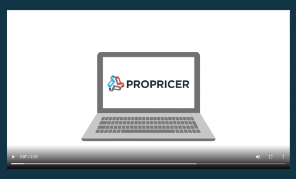From acquisition to contract closeout, the DoD data strategy since 2020 involves using data to regulate and optimize the standards, internal controls, and systems used during a contract.
Just about every DoD contract action now comes under scrutiny through a data lens. 2
The goal? Minimize variation to simplify the proposal design and development process, especially for the next generation of contract systems.
It’s a tall order. But agencies throughout the DoD are already experiencing success by expediting contracts in a fraction of the timeframes usually required. 1
Part of the Data Modernization program
From a boots-on-the-ground perspective, the DoD is leveraging commercial-sector data innovations like automation, AI, and 5G-enabled edge devices to improve military operations and make our troops more lethal in imminent warfare, including space. The overarching effort at all levels of the DoD is called Data Modernization.
Security is paramount during war, as vast flows of data transmitting among external sources, connected sensors, and platforms increase the risk of data espionage at every turn.
Our adversaries are also racing to amass data superiority, and whichever side lands it first will gain a military advantage. But to win wars, we first must make our contracts happen faster. And that’s aided by standardized, data-driven procurement. 3
DoD data strategy: Minimizing variation
During a proposal process, the way to distribute and secure data flows among contract writing systems and their associated accounting and logistics systems is through data and business rule validation, clause logic, and other technical sub-systems.
These elements are part of a modular, plug-and-play approach that is a significant component of the standardization process. By 2025, the DoD wants to operate in an environment of templatized IT synergies that can deliver equipment and services faster. As a result, an expeditious contract process is required. Innovative policy, guidance, and oversight will also need to take hold. The ideal contracting system is predictable output within a flexible, interoperable technology baseline.
All parties must adhere to functional and electronic data exchange standards, using common test criteria and internal controls for validation. Metrics and business intelligence inform the governance of a DoD agency’s systems environment—existing and future. 1
Contract procurement scenarios
Though contracting is global, much of it is now done through an evolving infrastructure—via mobile devices, which have their own data regulation and standardization requirements. Also, government agencies and contracting firms often employ contingent contracting resources, which may call for more limited network connectivity as part of standardization efforts.
Of course, strategic sourcing goals guide contracting, organized by commodity-specific buying commands. Some agencies require assistance from these commands—referred to as “assisted acquisition”—in the form of funds, standardized data connectivity, or both.
Currently, DoD contracting falls into three major buckets, “Operational,” “Major systems,” and “Logistics.” All require integration with legacy, new, and component systems, which are also undergoing data standardization.
Operational. This contract writing environment uses the Standard Procurement System (SPS), considered the motherload of standardization for procurement data involving everyday product, service, and construction contracts. These are often short-term contracts.
Major systems. Also supported by the SPS, these contract protocols are typically the most complex and require commercially developed tools to meet the needs of diverse weapon and major-system communities.
Logistics. Workloads are high-volume, simple contract actions for supplies involving systems like eProcurement and legacy Defense Logistics Agency protocols. These scenarios involve a high degree of standardized integration between innovative and requiring systems.
Procurement data standard
The Procurement Data Standard is a system-agnostic XML schema that helps standardize data found in contracts. Adopted DoD-wide for creating, processing, and sharing procurement actions, the PDS defines minimum requirements for contract writing systems to improve accuracy.
Under PDS, acquisition systems become interoperable. The procure-to-pay process becomes streamlined. Decisions become better-informed. And future migration to enterprise and federal systems becomes simpler.
PDS also introduces a new format for linking financial data to contract actions, commonly known as “Financial Data in Procurement,” or FDIP, boosting accuracy in contract reporting, and enabling links from requirements to executions. 4
Standardize pricing data
An excellent way to standardize the treatment of your cost and pricing data from proposal inception to submission is with ProPricer Contractor Edition.
The platform syncs seamlessly with the proposal review and analysis platform that government agencies prefer and use, ProPricer Government Edition.
Change requests are seamless and standardized on the government side, as are resultant estimate table and narrative alterations executed by your contracting firm.
One DoD agency has been able to speed the proposal process by as much as 40X with ProPricer. Whether on the contractor or government side, you can experience a considerable shift.
Form your data standardization play by requesting a ProPricer pre-demo call here.
Sources
- DoD Strategic Plan for Defense-Wide Procurement Capabilities
- Defense Pricing and Contracting Website: Contracting eBusiness
- DoD Data Strategy Report
- Defense Pricing and Contracting Website




